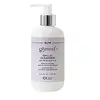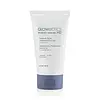What's inside
What's inside
 Key Ingredients
Key Ingredients

 Benefits
Benefits

 Concerns
Concerns

 Ingredients Side-by-side
Ingredients Side-by-side

Anthemis Nobilis Flower Extract
MaskingCamellia Sinensis Leaf Extract
AntimicrobialCaprylyl Glycol
EmollientCocamidopropyl Betaine
CleansingDecyl Glucoside
CleansingEthylhexylglycerin
Skin ConditioningGlycerin
HumectantHexylene Glycol
EmulsifyingMandelic Acid
AntimicrobialPanthenol
Skin ConditioningPentylene Glycol
Skin ConditioningPhenoxyethanol
PreservativePropanediol
SolventSymphytum Officinale Rhizome/Root Extract
Skin ConditioningTocopherol
AntioxidantSodium C14-16 Olefin Sulfonate
CleansingPEG-18 Glyceryl Oleate/Cocoate
EmulsifyingPEG-120 Methyl Glucose Dioleate
EmulsifyingAnthemis Nobilis Flower Extract, Camellia Sinensis Leaf Extract, Caprylyl Glycol, Cocamidopropyl Betaine, Decyl Glucoside, Ethylhexylglycerin, Glycerin, Hexylene Glycol, Mandelic Acid, Panthenol, Pentylene Glycol, Phenoxyethanol, Propanediol, Symphytum Officinale Rhizome/Root Extract, Tocopherol, Sodium C14-16 Olefin Sulfonate, PEG-18 Glyceryl Oleate/Cocoate, PEG-120 Methyl Glucose Dioleate
Salicylic Acid
MaskingWater
Skin ConditioningDisodium Laureth Sulfosuccinate
CleansingSodium Cocoyl Isethionate
CleansingSodium Lauroamphoacetate
CleansingGlycerin
HumectantSodium Methyl Cocoyl Taurate
CleansingMethylisothiazolinone
PreservativeCocamidopropyl Betaine
CleansingBisabolol
MaskingZingiber Officinale Root Extract
MaskingOryza Sativa Extract
AbsorbentAvena Sativa Kernel Extract
AbrasiveDisodium EDTA
Beta-Glucan
Skin ConditioningEucalyptus Globulus Oil
Xanthan Gum
EmulsifyingMenthol
MaskingMyristoyl Tetrapeptide-13
Skin ConditioningAcetyl Carboxymethyl Cocoyl Glycine
Phenoxyethanol
PreservativeCaprylyl Glycol
EmollientSalicylic Acid, Water, Disodium Laureth Sulfosuccinate, Sodium Cocoyl Isethionate, Sodium Lauroamphoacetate, Glycerin, Sodium Methyl Cocoyl Taurate, Methylisothiazolinone, Cocamidopropyl Betaine, Bisabolol, Zingiber Officinale Root Extract, Oryza Sativa Extract, Avena Sativa Kernel Extract, Disodium EDTA, Beta-Glucan, Eucalyptus Globulus Oil, Xanthan Gum, Menthol, Myristoyl Tetrapeptide-13, Acetyl Carboxymethyl Cocoyl Glycine, Phenoxyethanol, Caprylyl Glycol
Ingredients Explained
These ingredients are found in both products.
Ingredients higher up in an ingredient list are typically present in a larger amount.
Caprylyl Glycol is a humectant and emollient, meaning it attracts and preserves moisture.
It is a common ingredient in many products, especially those designed to hydrate skin. The primary benefits are retaining moisture, skin softening, and promoting a healthy skin barrier.
Though Caprylyl Glycol is an alcohol derived from fatty acids, it is not the kind that can dry out skin.
This ingredient is also used as a preservative to extend the life of products. It has slight antimicrobial properties.
Learn more about Caprylyl GlycolCocamidopropyl Betaine is a fatty acid created by mixing similar compounds in coconut oil and dimethylaminopropylamine, a compound with two amino groups.
This ingredient is a surfactant and cleanser. It helps gather the dirt, pollutants, and other impurities in your skin to be washed away. It also helps thicken a product and make the texture more creamy.
Being created from coconut oil means Cocamidopropyl Betaine is hydrating for the skin.
While Cocamidopropyl Betaine was believed to be an allergen, a study from 2012 disproved this. It found two compounds in unpure Cocamidopropyl Betaine to be the irritants: aminoamide and 3-dimethylaminopropylamine. High-grade and pure Cocamidopropyl Betaine did not induce allergic reactions during this study.
Learn more about Cocamidopropyl BetaineGlycerin is already naturally found in your skin. It helps moisturize and protect your skin.
A study from 2016 found glycerin to be more effective as a humectant than AHAs and hyaluronic acid.
As a humectant, it helps the skin stay hydrated by pulling moisture to your skin. The low molecular weight of glycerin allows it to pull moisture into the deeper layers of your skin.
Hydrated skin improves your skin barrier; Your skin barrier helps protect against irritants and bacteria.
Glycerin has also been found to have antimicrobial and antiviral properties. Due to these properties, glycerin is often used in wound and burn treatments.
In cosmetics, glycerin is usually derived from plants such as soybean or palm. However, it can also be sourced from animals, such as tallow or animal fat.
This ingredient is organic, colorless, odorless, and non-toxic.
Glycerin is the name for this ingredient in American English. British English uses Glycerol/Glycerine.
Learn more about GlycerinPhenoxyethanol is a preservative that has germicide, antimicrobial, and aromatic properties. Studies show that phenoxyethanol can prevent microbial growth. By itself, it has a scent that is similar to that of a rose.
It's often used in formulations along with Caprylyl Glycol to preserve the shelf life of products.